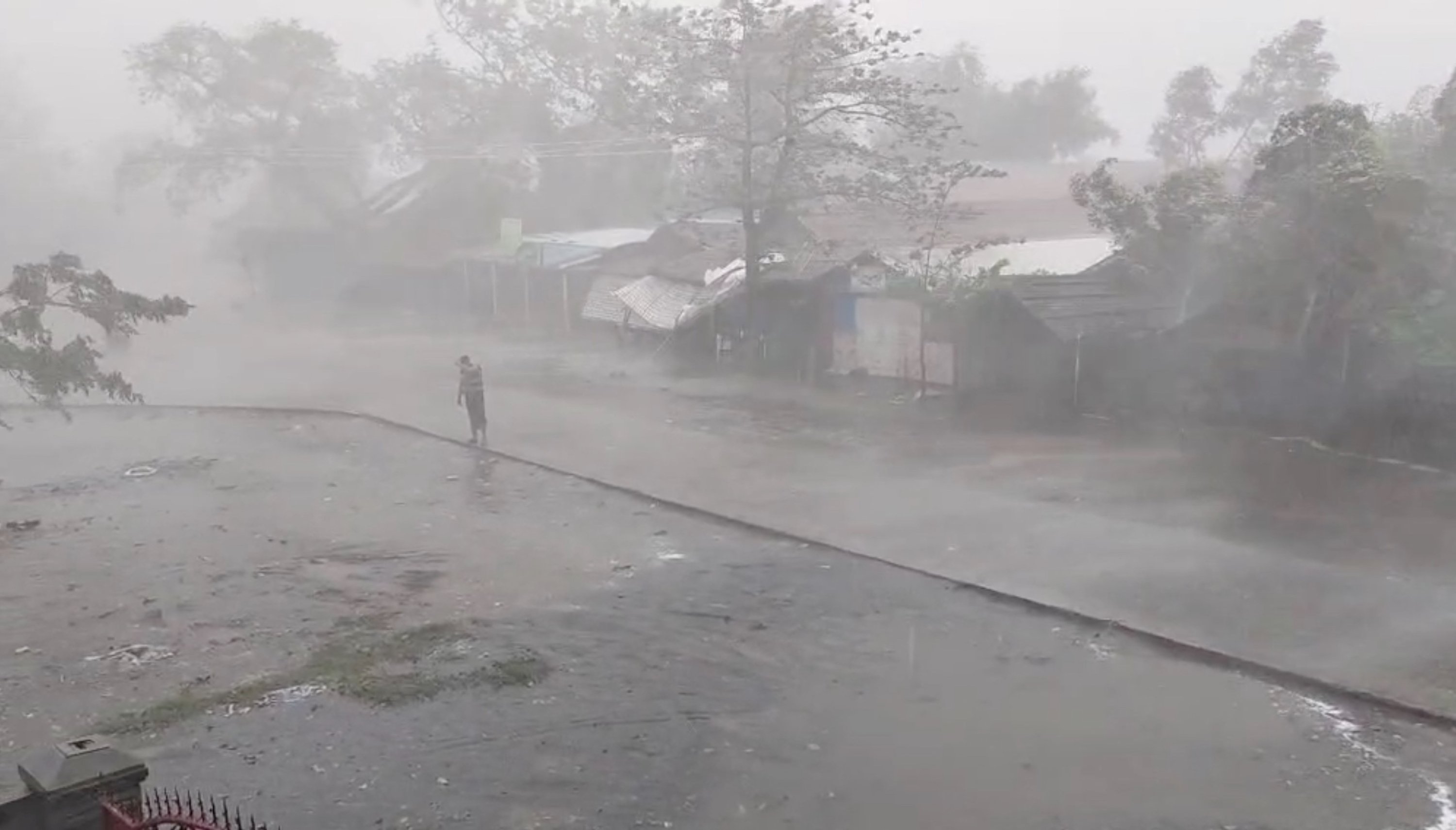© Turkuvaz Haberleşme ve Yayıncılık 2024
Bangladesh and Myanmar were on high alert on Sunday as an intense cyclone made its way toward their coastal regions, prompting authorities to strongly advise numerous individuals in both nations to seek refuge promptly.
The outer band of Cyclone Mocha reached the coast of Myanmar’s Rakhine state on Sunday morning. By afternoon, the storm’s center was expected to land near Sittwe township, under the highest weather alert, Myanmar’s Meteorological Department said Sunday.
More than 4,000 Sittwe’s 300,000 residents have been evacuated to other cities since Friday. Over 20,000 people are sheltering in sturdy buildings such as monasteries, pagodas, and schools located on the city’s highlands, said Tin Nyein Oo, who is helping people in shelters in Sittwe.
He added many locals live in areas over 3 meters above sea level, where residents believe the storm surge cannot reach.
Strong winds of 40 to 48 kilometers per hour (25 to 40 miles per hour) were blowing in the city, Tin Nyein Oo said on Sunday morning.

“The storm has not yet entered, so we don’t have much difficulty. However, there are too many people in the shelters and not enough toilets,” he added.
Lin Lin, the chairperson of a local charitable foundation, said earlier there was not enough food in the shelters in Sittwe after more people arrived than expected.
In most of Bangladesh, the weather remained sunny and humid on Sunday morning.
U.N. agencies and aid workers in Bangladesh pre-positioned tons of dry food and dozens of ambulances with mobile medical teams in sprawling refugee camps that house over 1 million Rohingya who fled persecution in Myanmar.
Bangladesh issued the highest danger signal for the city of Cox’s Bazar, home to the camps. In addition, the Bangladesh Meteorological Department warned the cyclone could cause severe damage to lives and property in eight coastal districts.
As of Sunday morning, no heavy rainfall had been reported in Cox’s Bazar. However, authorities said 1.27 million people had been evacuated in the district.
The sea was rough
Fisher Jamal Uddin in Cox’s Bazar said local elected officials and volunteers were helping at the cyclone shelter. “We are asking people to move to safe places. We are trying to stay safe,” he said.
“The weather isn’t good. We are following the instructions of the Meteorological Department. We are now thinking about what to do,” he said.
With more than 160 million people, Bangladesh has prepared over 1,500 cyclone shelters. The navy said it’s keeping 21 ships, maritime patrol aircraft and helicopters ready for rescue and relief operations.
Authorities in Bangladesh said heavy rains from the cyclone could trigger landslides in Chattogram and Cox’s Bazar and three other hilly districts - Rangamati, Bandarban and Khagrachhari.
Bangladeshi Prime Minister Sheikh Hasina has ordered officials to prepare for evacuations and rescues.
The Junior Minister for Disaster Management, Enamur Rahman, said Saint Martin’s Island in the Bay of Bengal might face greater risk and that the government has prepared 37 cyclone shelters to accommodate 8,500 people there.
In May 2008, Cyclone Nargis hit Myanmar with a storm surge that devastated populated areas around the Irrawaddy River Delta. At least 138,000 people died, and thousands of homes and other buildings were washed away.
Roxy Mathew Koll, a climate scientist at the Indian Institute of Tropical Meteorology in Pune city, said cyclones in the Bay of Bengal are becoming more intense and more quickly, partly because of climate change.
Climate scientists say cyclones can now retain their energy for many days. Cyclone Amphan in eastern India in 2020 continued to travel overland as an intense cyclone and caused extensive devastation.
“As long as oceans are warm and winds are favorable, cyclones will retain their intensity for a longer period,” Koll said.
Cyclones are among the most devastating natural disasters in the world, significantly if they affect densely populated coastal regions in South Asia.
